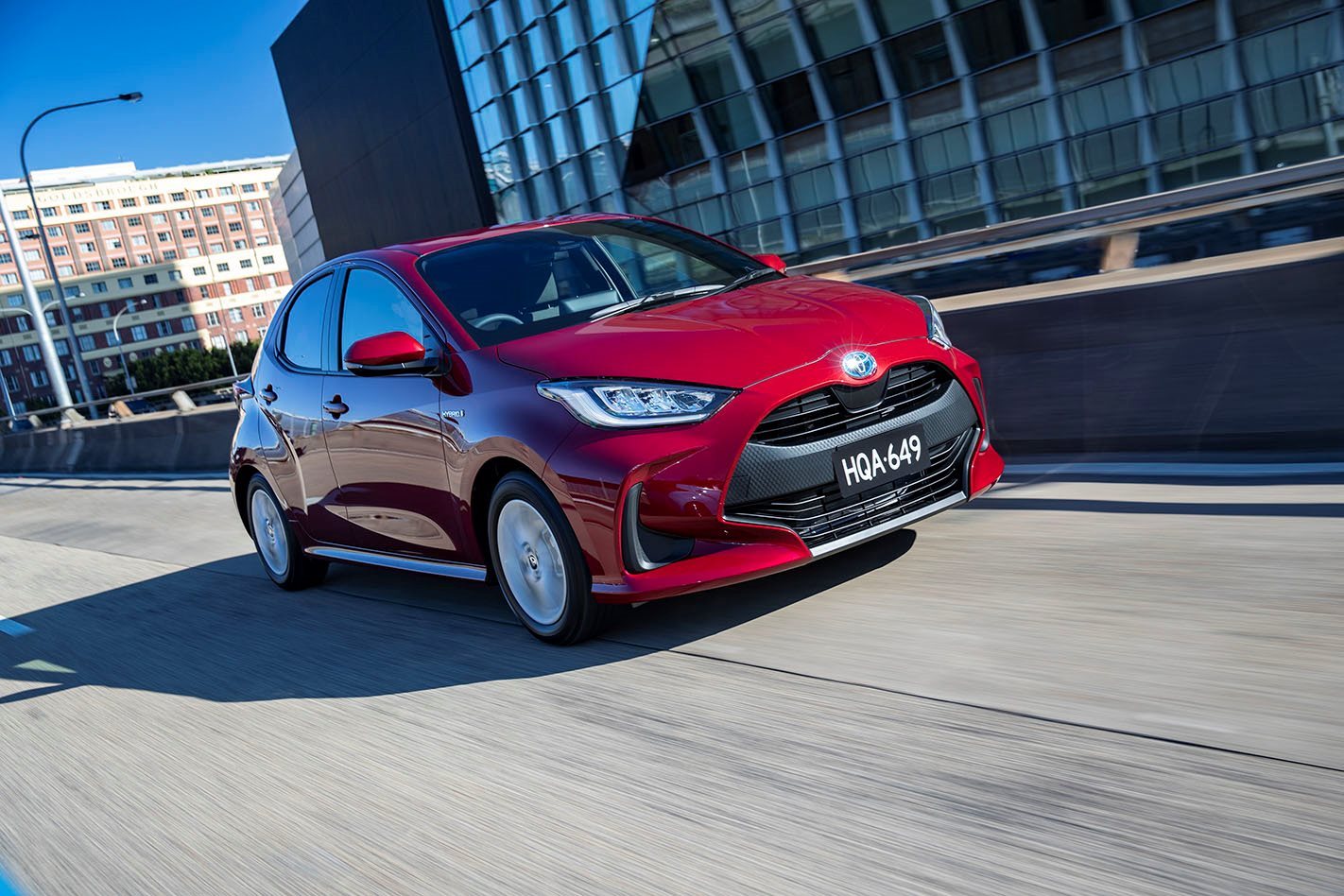
Score breakdown
Things we like
- Deserved reputation for reliability
- Active safety, space and comfort
Not so much
- Relatively high entry-level price, lack of rear-seat amenities
What stands out?
The Toyota Yaris hatch is easy to drive and park in an urban environment and has an enviable reputation for reliability. The fourth-generation model is one of the most advanced light hatchbacks in terms of active safety technology. The Yaris has hybrid versions that are among the most affordable electrified vehicles on the Australian market.
There is also hot hatch version called the GR Yaris, which is not included in this review.
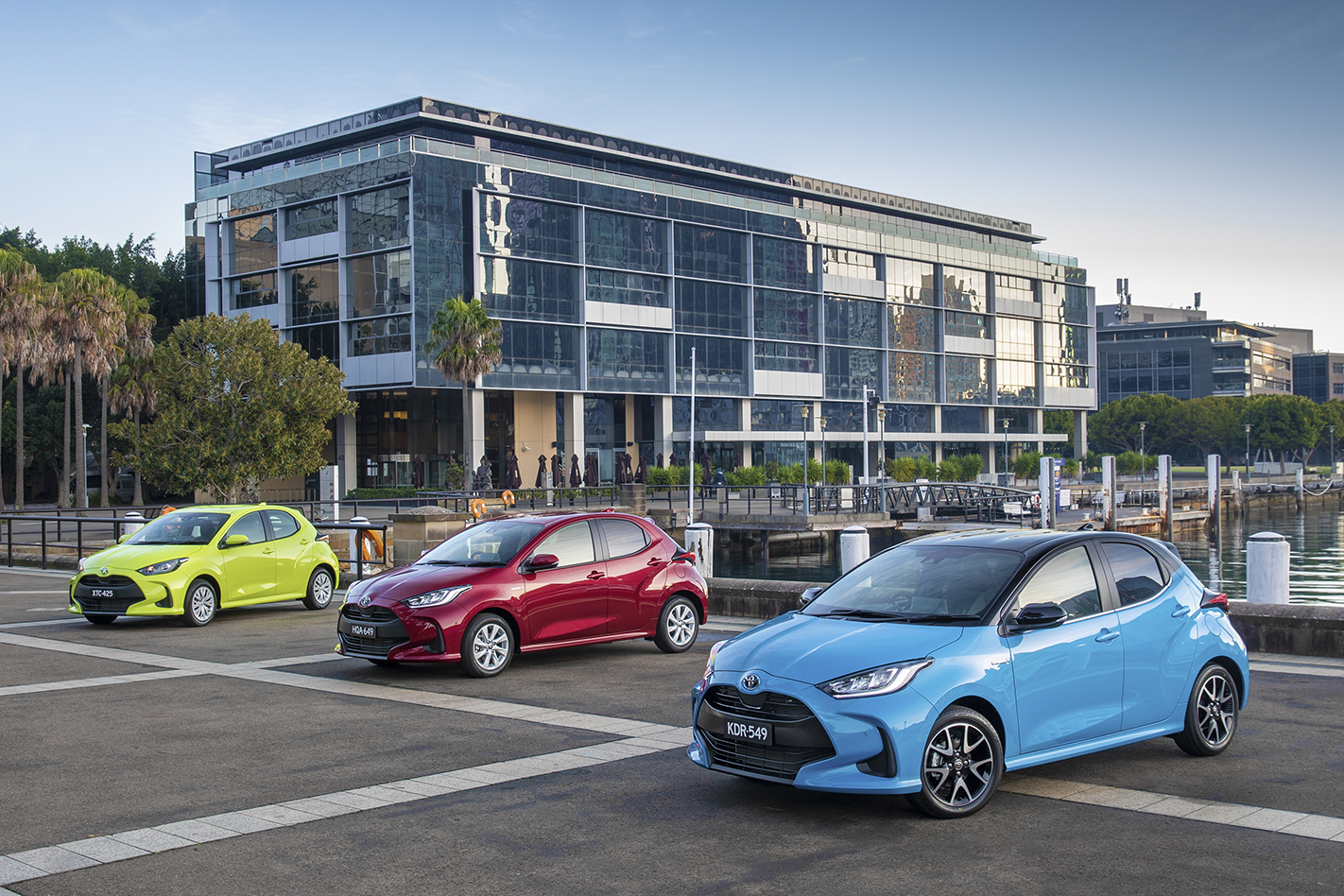
What might bug me?
Having to save or borrow more to buy a new Yaris. This model has class-leading standard equipment levels, but that all comes at a price which takes entry-level pricing well beyond $20,000.
What body styles are there?
Five-door hatchback only.The Toyota Yaris drives its front wheels, and it is classed as a light car, lower priced.
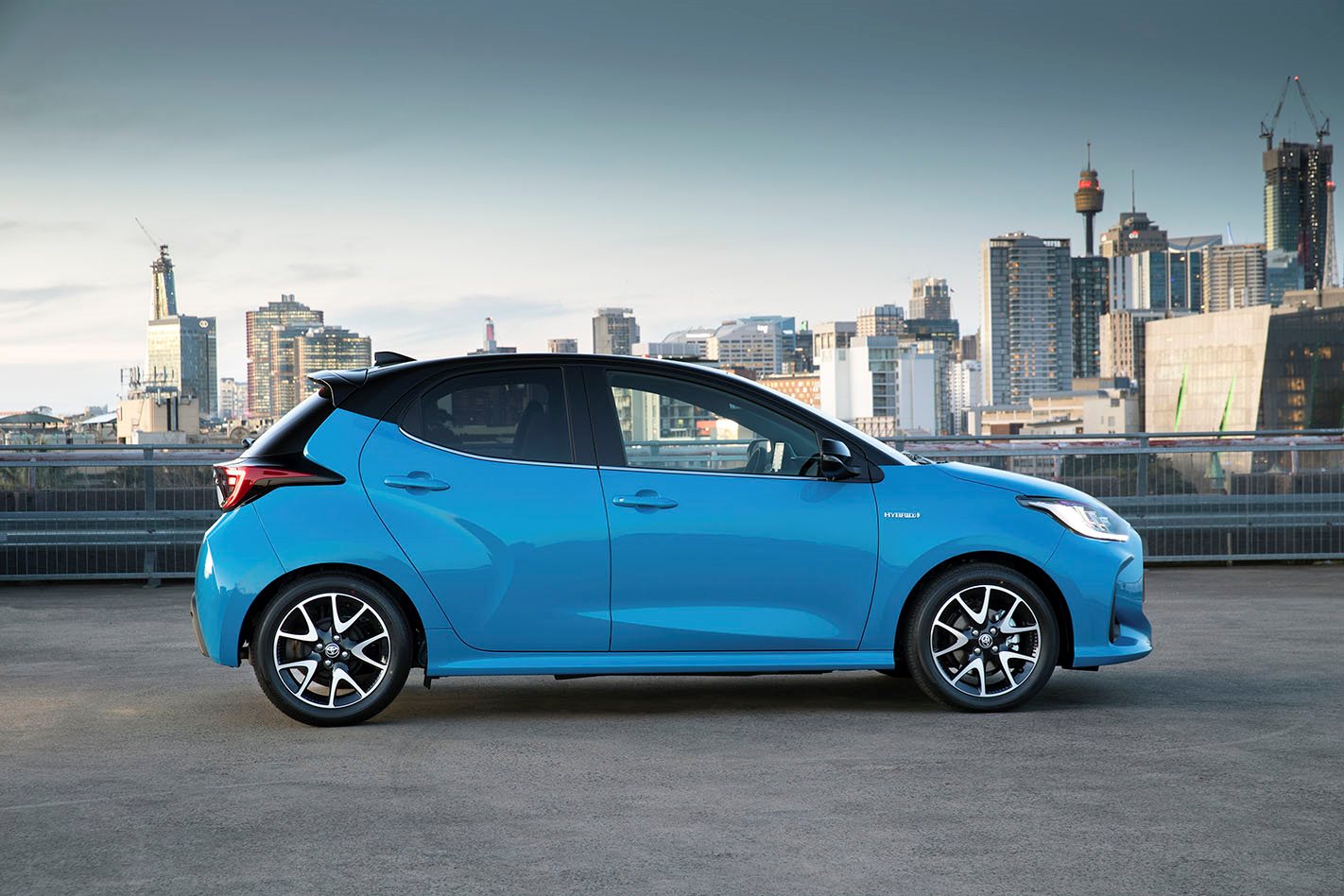
What features does every Toyota Yaris have?
The fourth-generation Yaris is brimming with standard features that include:
- 8.0-inch touchscreen infotainment system with reversing camera and Apple CarPlay and Android Auto and myToyota app, and Bluetooth phone connectivity with enhanced voice recognition.
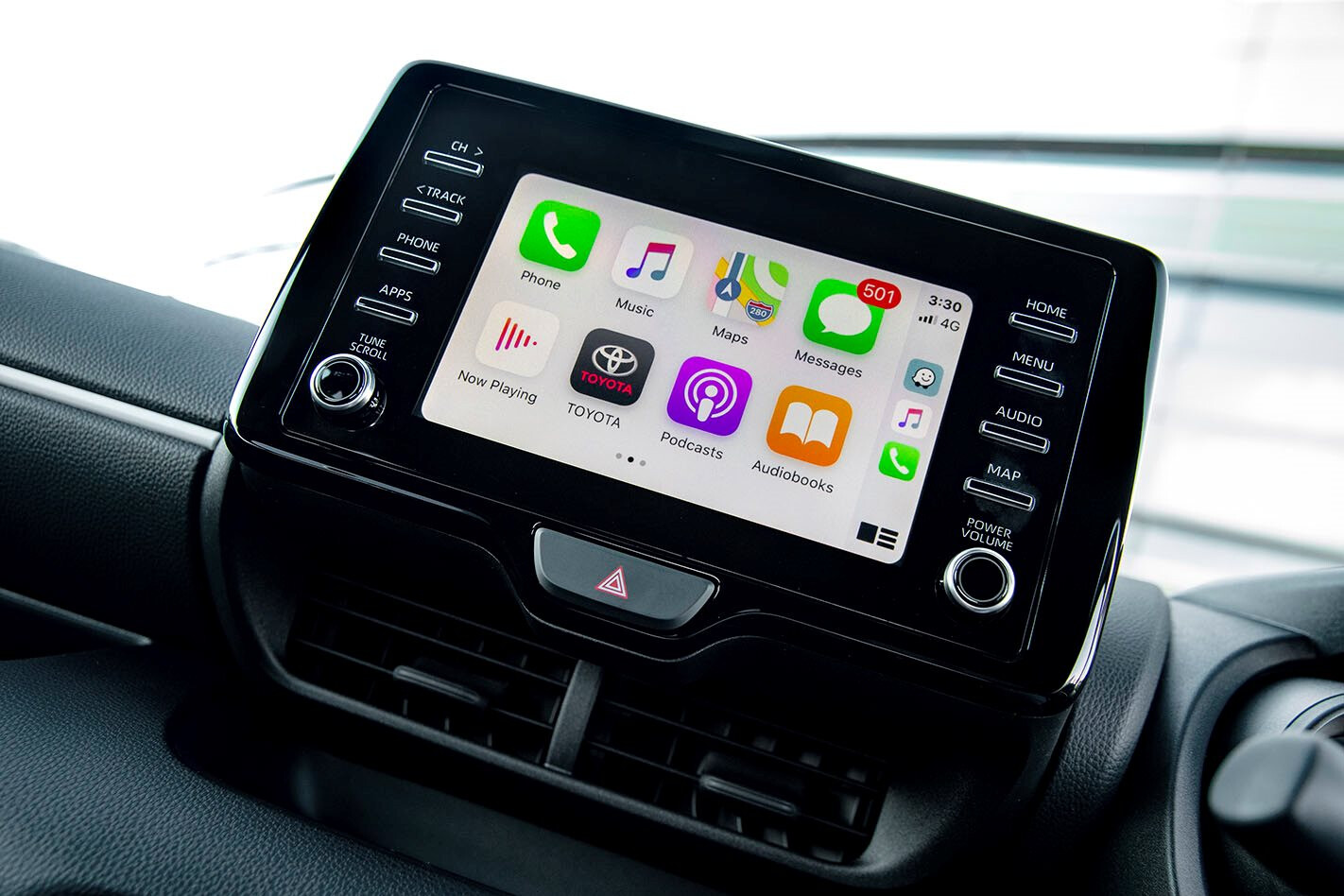
- AM/FM/digital (DAB+) radio and six-speaker audio.
- Enhanced voice recognition.
- Eight airbags – Driver, front passenger, two front centre, two front side, two curtain shield.
- Toyota Pre-collision safety system (autonomous emergency braking) with pedestrian, day and night-time detection and cyclist, day-time detection.
- Adaptive cruise control.
- Lane-keeping assist, road-sign assist, Intersection turn assistance, which alerts you of someone is on the road you’re turning into.
- Tilt and telescopic steering column.
- Rear seat-belt reminder.
- Air-conditioning.
- Temporary space-saver spare wheel.
- Auto high beam.
- LED daytime running lamps.
- LED tail, stop lamp.
- Auto retractable door mirrors.
- Shark fin antenna.
- Hill-start assist control.
Which engine uses least fuel, and why wouldn’t I choose it?
The Yaris Ascent Sport only comes with the petrol engine with a choice of manual or automatic transmission. The SX and ZR versions come with either the petrol or hybrid powertrains with CVT auto.
The 1.5-litre petrol/electric hybrid can run a very short distance on electric power alone which takes its official urban-cycle fuel economy rating to 2.8 litres/100km.
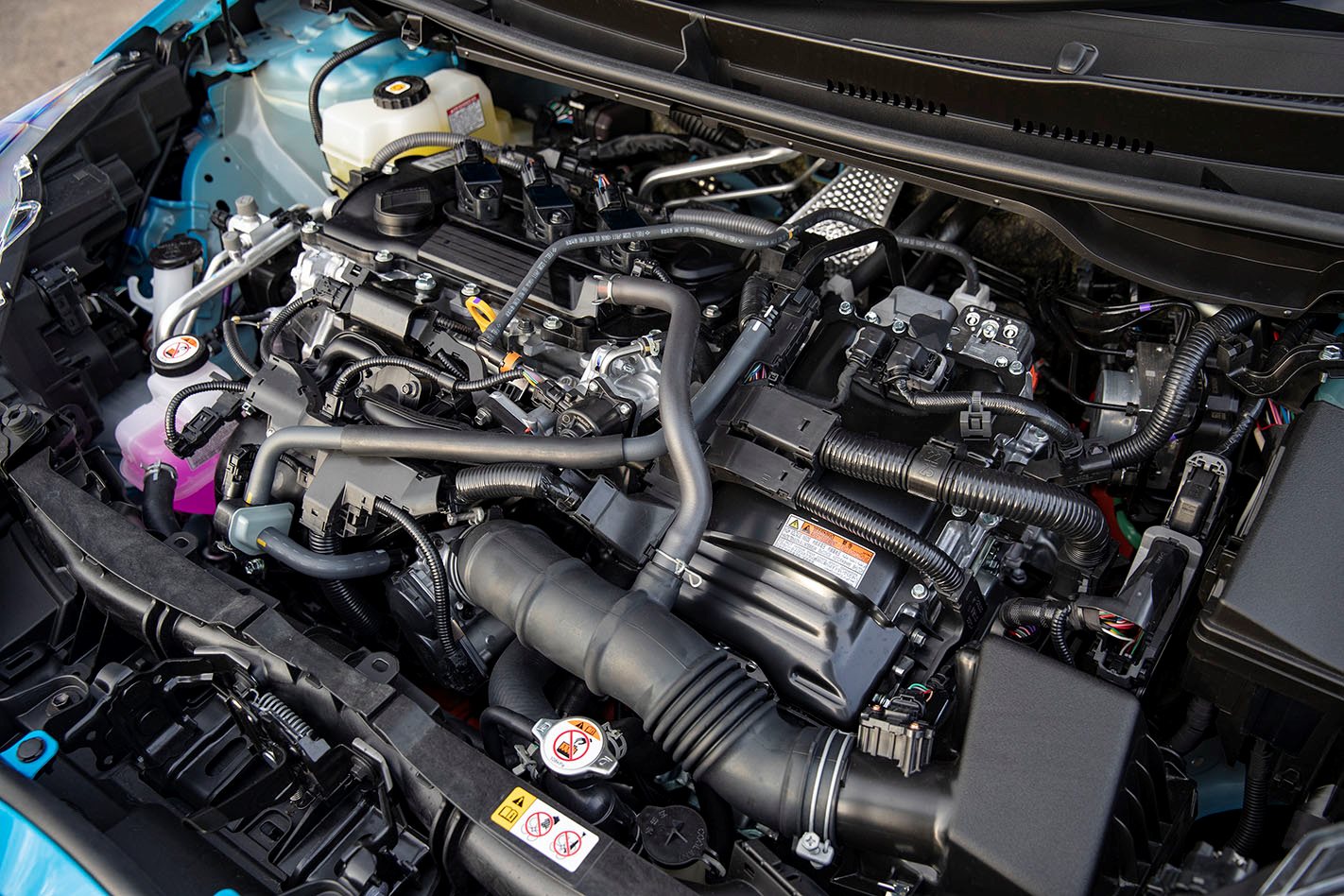
One reason you might not want the hybrid is you want to pay about less for a petrol Yaris SX or ZR.
The 1.5-litre, three-cylinder petrol versions use a still-frugal 4.9-litres/100km with the CVT auto.
With the six-speed manual gearbox that’s available with the Yaris Ascent Sport, the same engine consumes 5.5-litres/100km.
While each powertrain has the same engine at their core, the hybrid is a little perkier because of the additional boost from the electric motor.
What key features do I get if I spend more?
The least costly Yaris, the Ascent Sport, comes with the 1.5-litre petrol engine and six-speed manual gearbox as standard, 15-inch steel wheels with plastic trim, manually controlled air-conditioning, and cloth-covered seats. Spending an additional $1500 brings the CVT automatic.
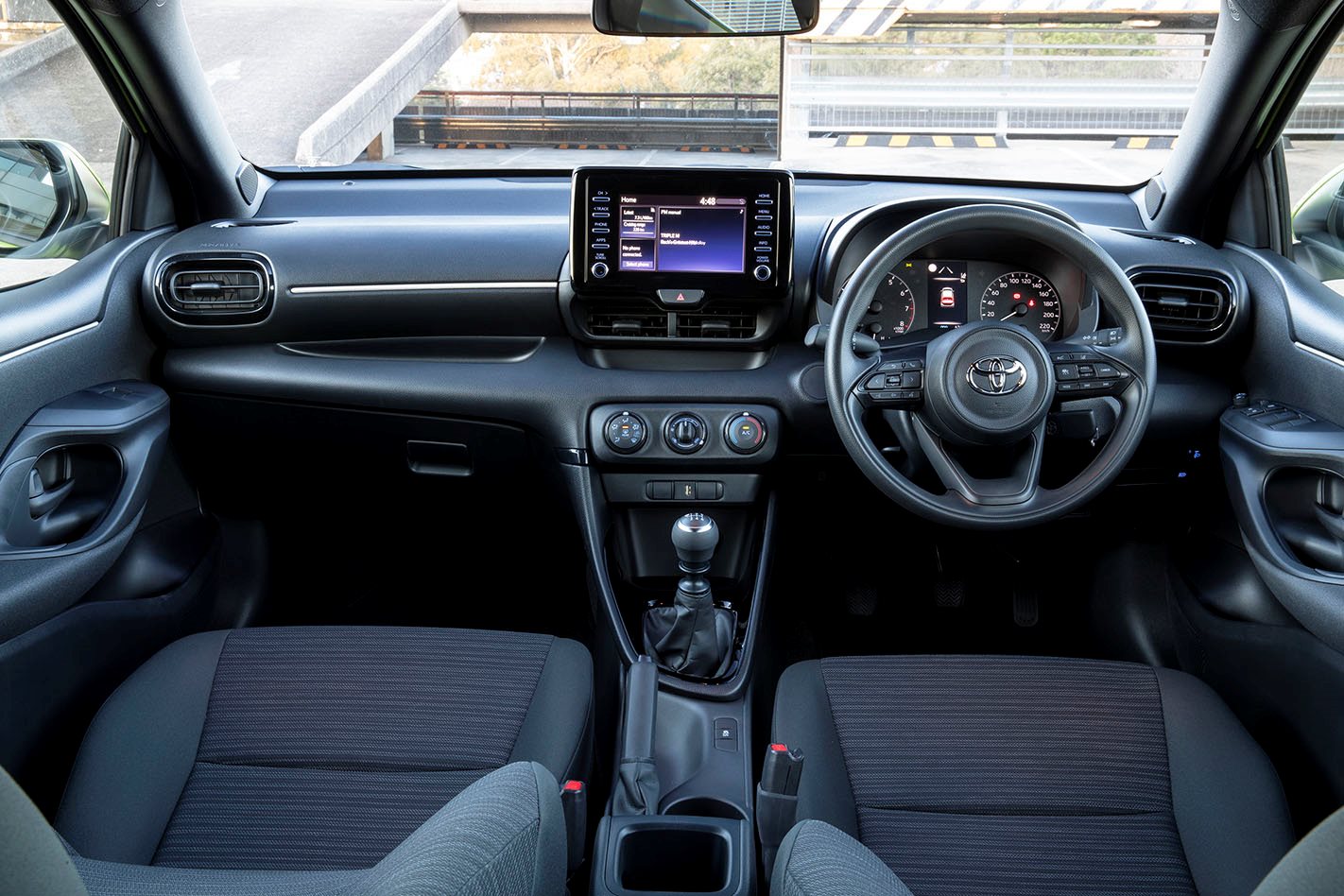
Spending more on the Yaris SX brings the CVT auto as standard and an option to upgrade to the Hybrid powertrain. You also get:
- In-built Satellite navigation with SUNA live traffic, speed-limit display and warnings.
- Climate control air-conditioning that lets you set a temperature.
- Keyless smart entry and start.
- Digital gauges.
- Soft-touch instrument panel.
- Leather-accented steering wheel.
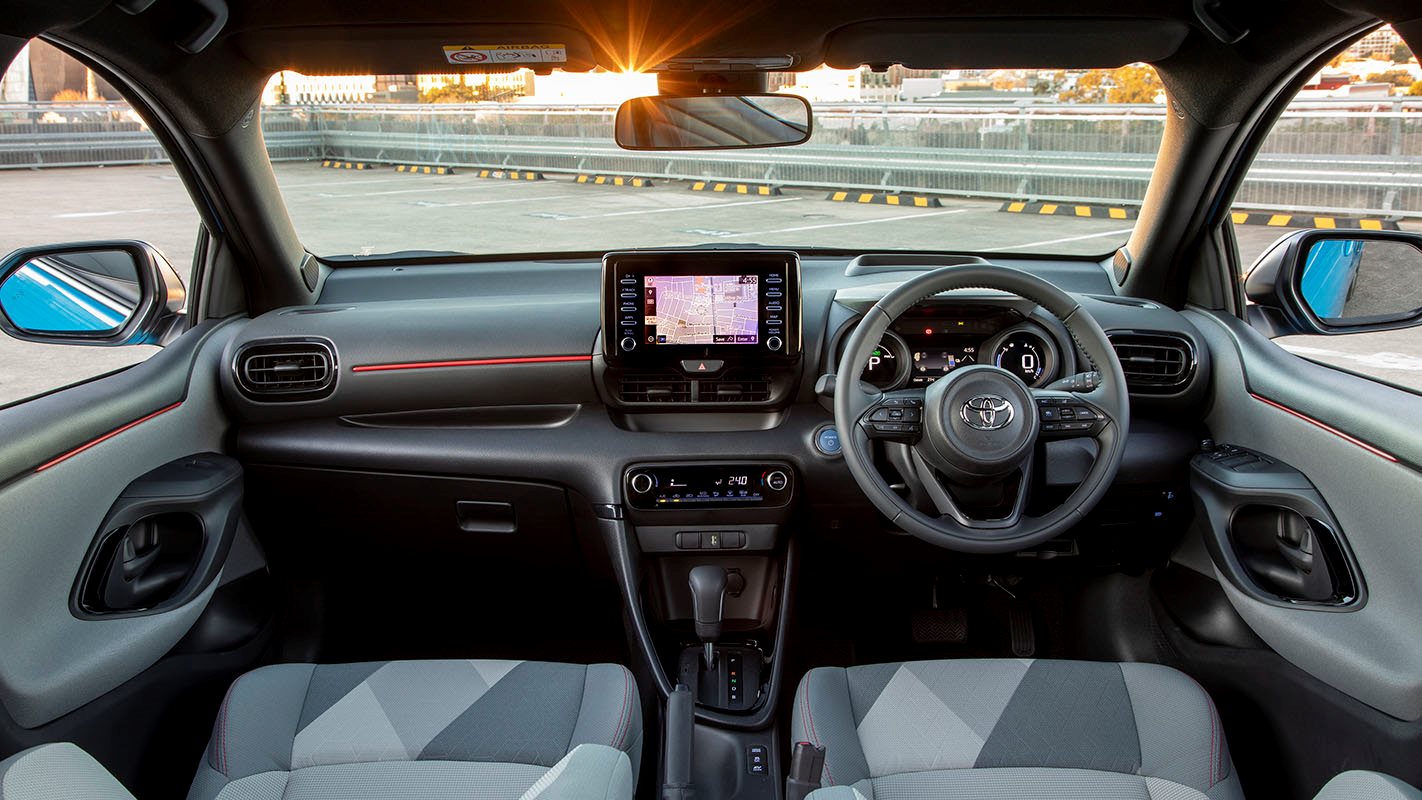
- 15-inch alloy wheels.
- LED headlamps and indicators.
- LED rear combination lamps.
- Privacy glass.
- Silver trim highlights.
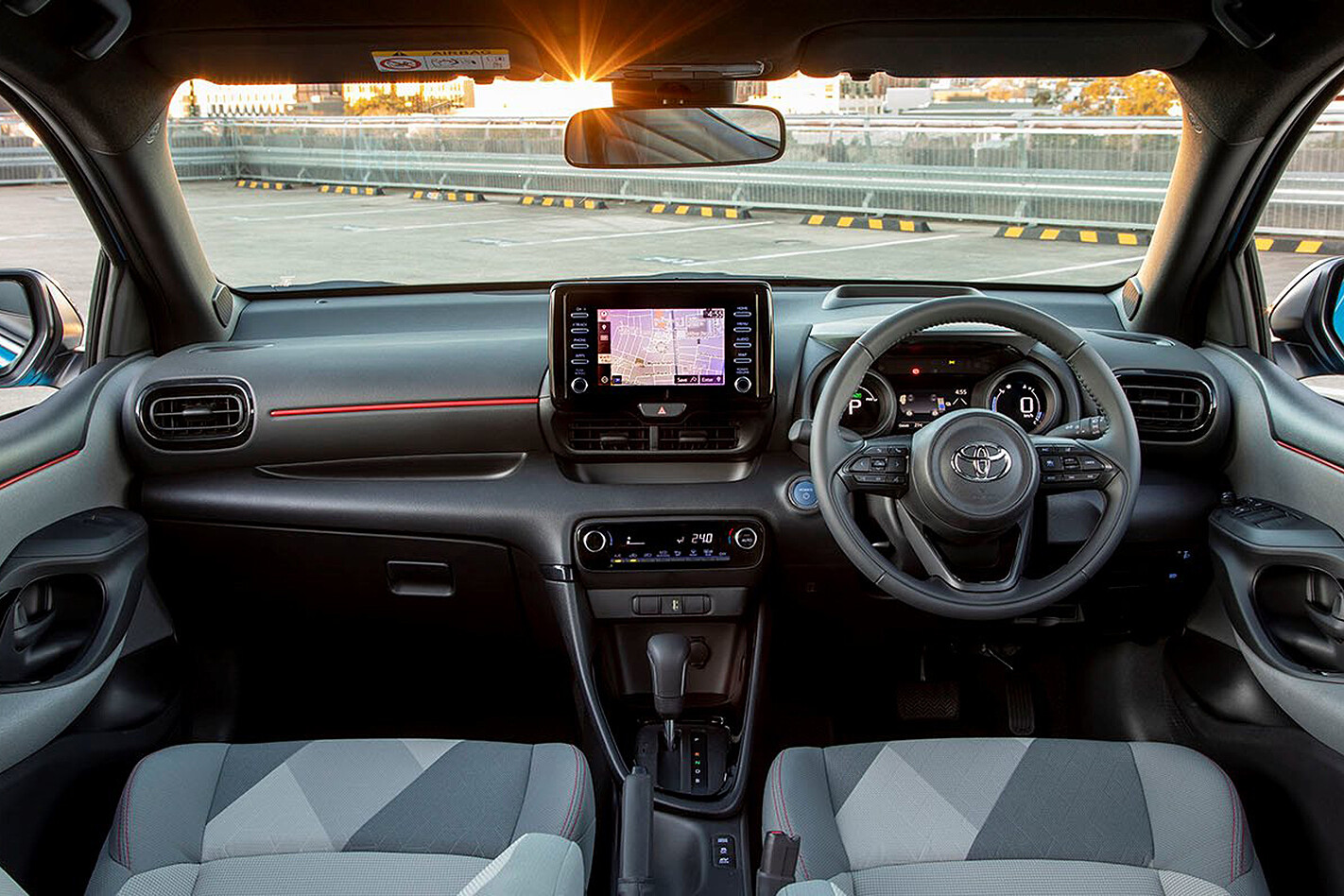
- 16-inch alloy wheels.
- Rear spoiler.
- Head-up display.
- Sports front seats.
- Blind-spot monitor.
- Parking sensors and low-speed auto braking.
- Paddle shifters (not on hybrid).
- Embossed & Y-printed seat fabric
Does any upgrade have a down side?
How comfortable is the Yaris?
The new Yaris has a 40mm-longer wheelbase than the previous model, but legroom in back can be tight for adults sitting behind an average-sized driver.
It’s much better up front, where the seats are generously sized and there’s good shoulder room ample. The driving position is good too, even for taller drivers, thanks to decent seat travel and plenty of wheel adjustment.
This SX and ZR specs have a digital instrument cluster, which puts the drive mode and power meter in one circular pod, road speed in the one opposite, and multiple pages of configurable info in the centre.

The ZR also has a head-up display, however it’s almost invisible once if you’re wearing polarised sunglasses.
Ride comfort at speed feels tame, meaning no queasy motion over undulations, though it’s a little firm at the around-town speeds. And things can get a little noisy in the cabin on windy days or on coarse-chip roads.
What about safety in a Yaris?
Every Yaris comes with stability control, eight airbags and a reversing camera. An emergency brake signal flashes the brake lights during heavy braking, helping other drivers notice you’re stopping sharply.
There are two airbags directly in front of the driver and front passenger; and two between the driver and front passenger in the seat bolsters, two on each side at the front and a curtain airbag on each side protecting the heads of front and rear passengers from side impacts.
All Yaris versions come with an active safety suite called Toyota Safety Sense. It comprises autonomous emergency braking that can detect pedestrians, day and night and cyclists during the day.
Other standard active safety features include lane-keeping assist, road-sign assist and intersection turn assistance, which alerts you of someone is on the road you’re turning into.
The Yaris ZX adds blind-spot monitor and rear parking sensors that will automatically stop the Yaris if it is about to someone or something while slowly reversing.
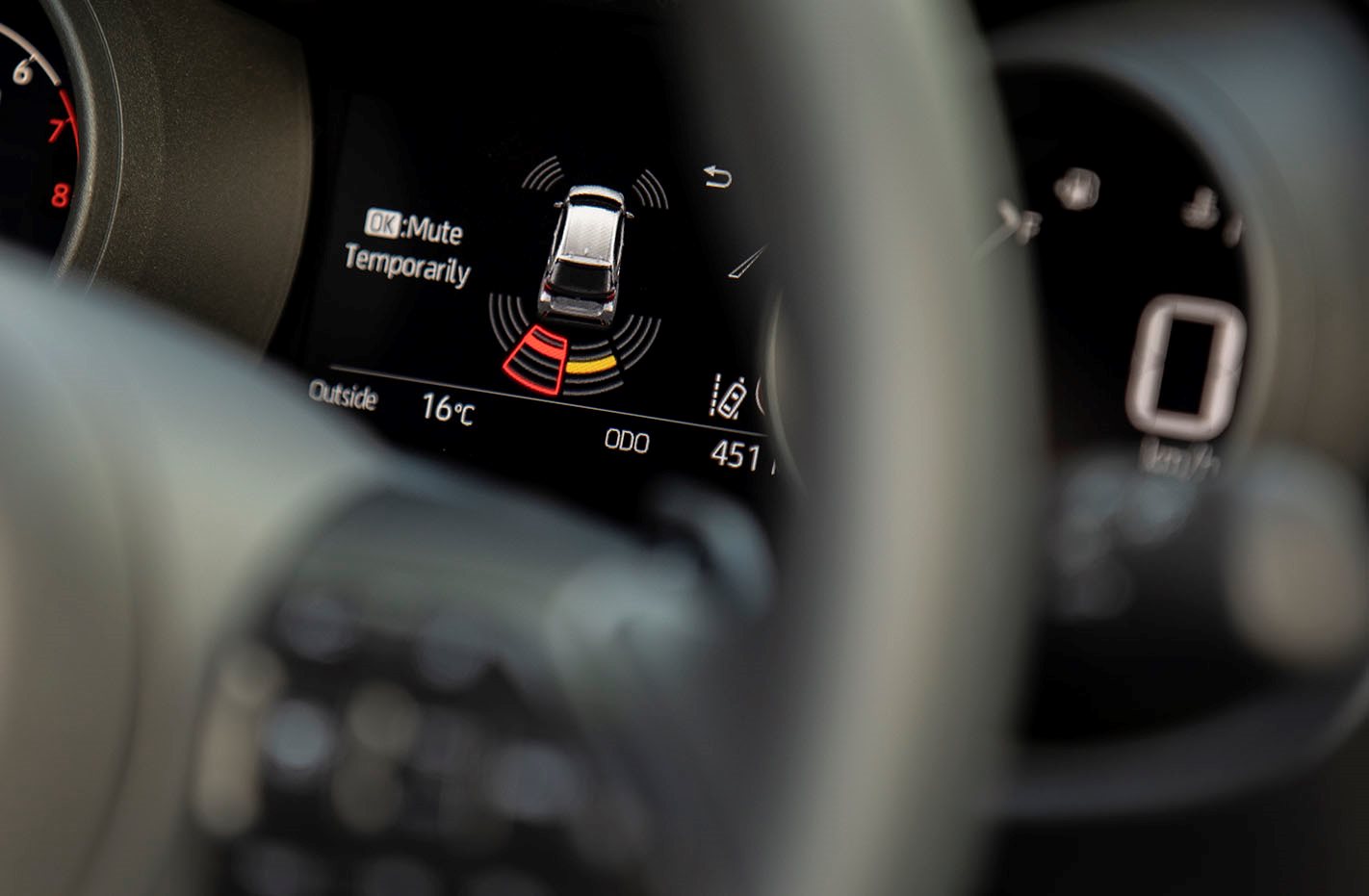
The headlights in all versions have a self-dipping function switches them to low beam automatically to avoid dazzling oncoming drivers or people you’re following. It returns to high beam when that’s safe.
The Australasian New Car Assessment Program (ANCAP) has yet to review the 2020 Toyota Yaris.
I like driving – will I enjoy this car?
So far we’ve only had an opportunity to test drive the hybrid version.
Like other Toyota hybrid models there’s that pleasant, seamless, near-silent EV take-off. But it’s only sustainable for a few car lengths and jogging pace before the engine is required, which joins the propulsion effort with a small tremor of vibration.
There’s sufficient torque from both the electric motor and the petrol engine that you don’t need big throttle inputs to feel nimble and eager in urban traffic.
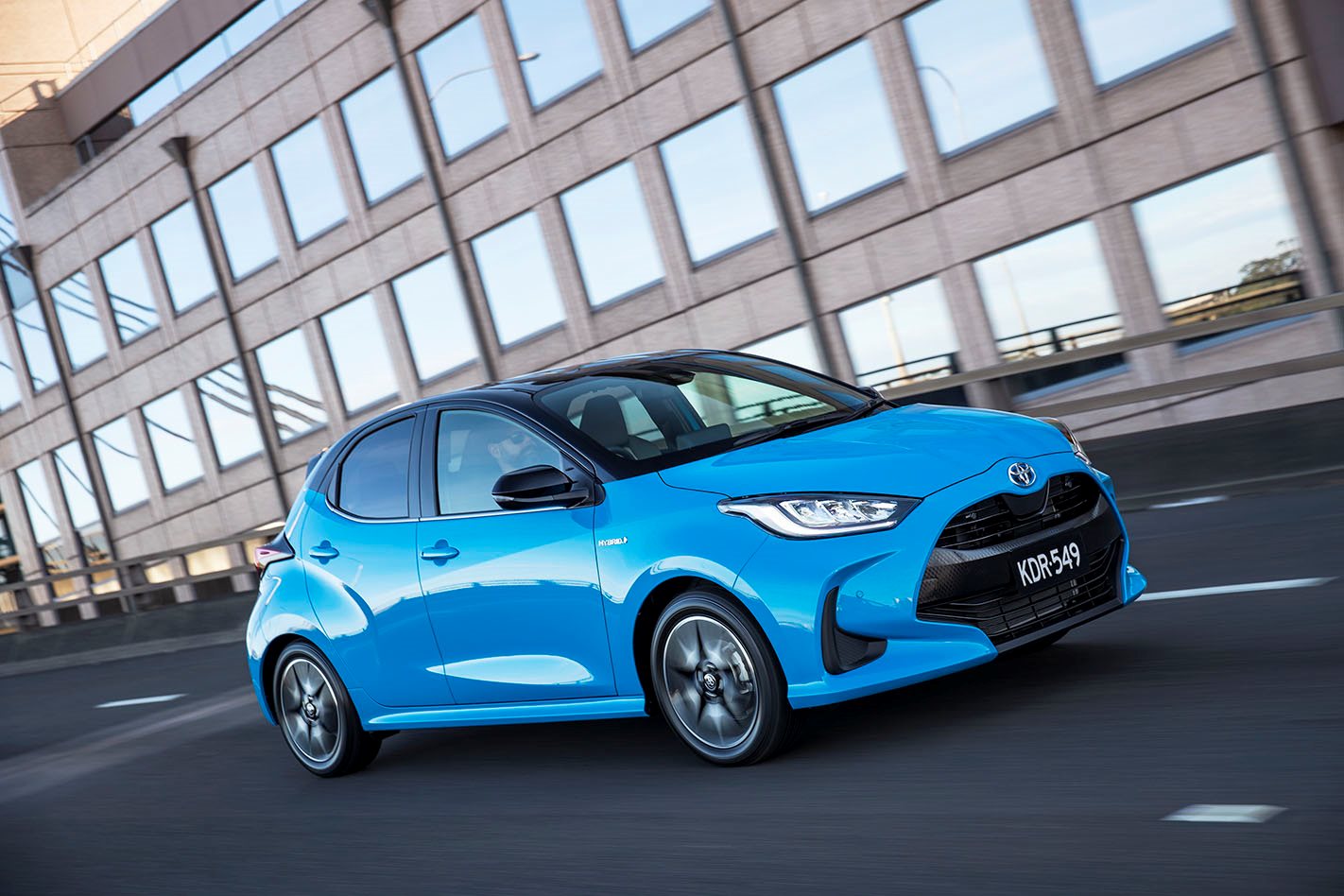
But jump on a motorway and the engine is actually pretty vocal and not very quick when asked to deliver such as when overtaking. Expect less oomph with the standard petrol powertrain.
On a more positive note, the new Yaris does have a real sense of maturity and confidence in its surefootedness at motorway speeds, feeling massively removed from its flighty, fidgety predecessor.
The steering, which is super light and direct at low speed, firms up nicely to be resolutely slack-free and attentive.
How is life in the rear seats?
It’s a light hatch but rear legroom is ok as long as the front seat occupants aren’t too tall.
For all the features it’s a shame Toyota has skimped on USB sockets, sear pockets and a fold-down armrest. There are no rear air-vents either but that’s not as much an issue in smaller cars.
As with most cars these days there are two ISOFIX child-seat anchor points and the three top tethers.

How is it for carrying stuff?
The 270-litre boot space is 16-litres less than the previous model but still more than 50-litres bigger than the Corolla.The cargo area incorporates a two-level deck board. Larger items can be accommodated with a 60:40 split-fold rear seat back.
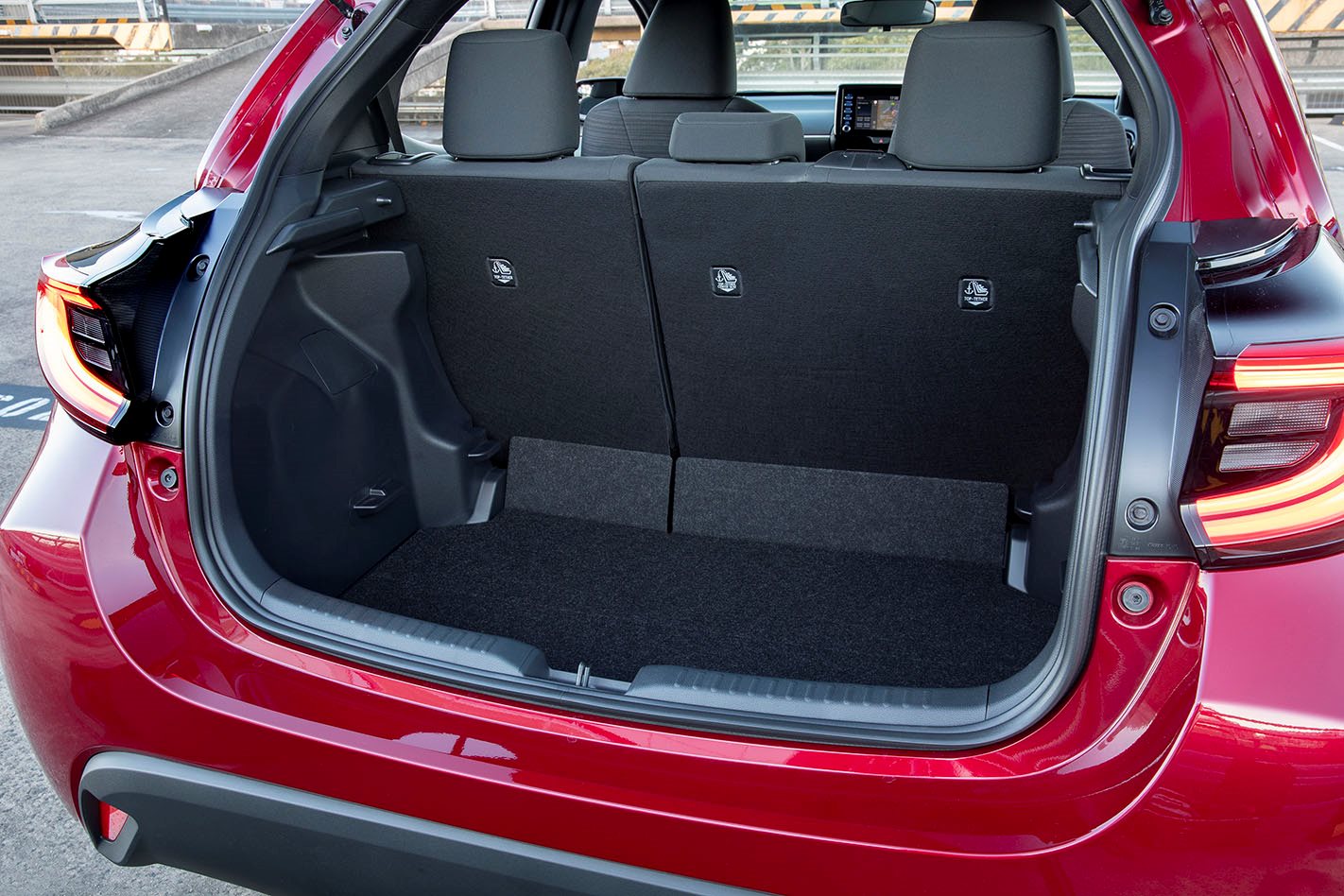
Where is the Yaris made?
The Toyota Yaris is built in Japan.
What might I miss that similar aged cars have?
Not much, such are the equipment levels in the fourth-generation Yaris.
Perhaps a punchy turbocharged engine as available in the Volkswagen Polo and Suzuki Swift.
More boot space. The Kia Rio, Polo and Honda Jazz all carry more than 300-litres. The Jazz also has rear seats that can be folded different ways for more flexible carrying options.
A sedan version as available with the Mazda 2.
I like this car, but I can’t choose which version. Can you help?
The Toyota Yaris SX Hybrid is our pick of the line-up. It has the more responsive and ultra-economical 1.5-litre hybrid power powertrain and most much of the features also found in the ZR. It’s also one of the most affordable hybrid cars in the market.
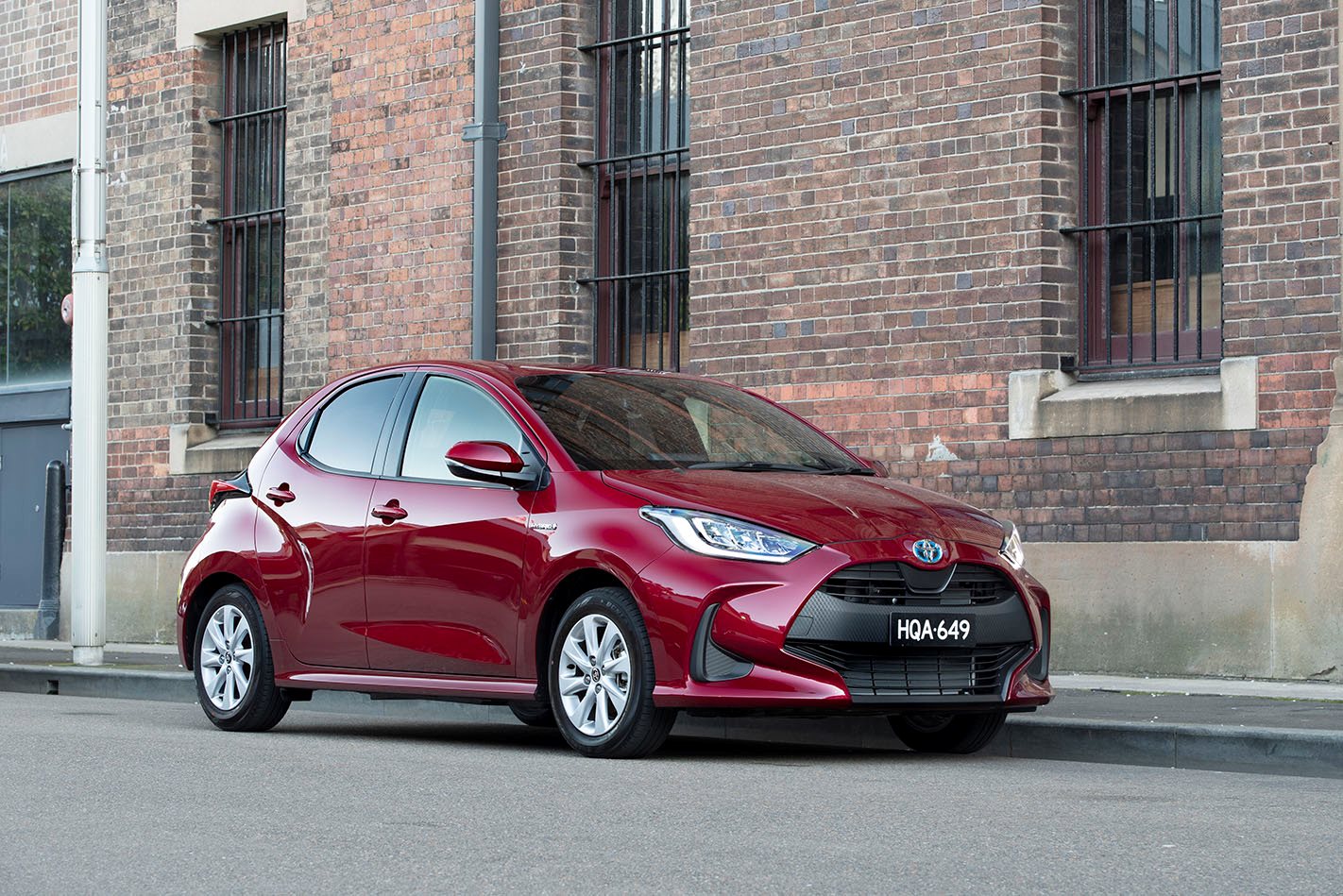
How old is the Yaris? Are there plans to update it soon?
The fourth-generation Toyota Yaris arrived in September 2020. Don’t expect an update until the second half of 2022.
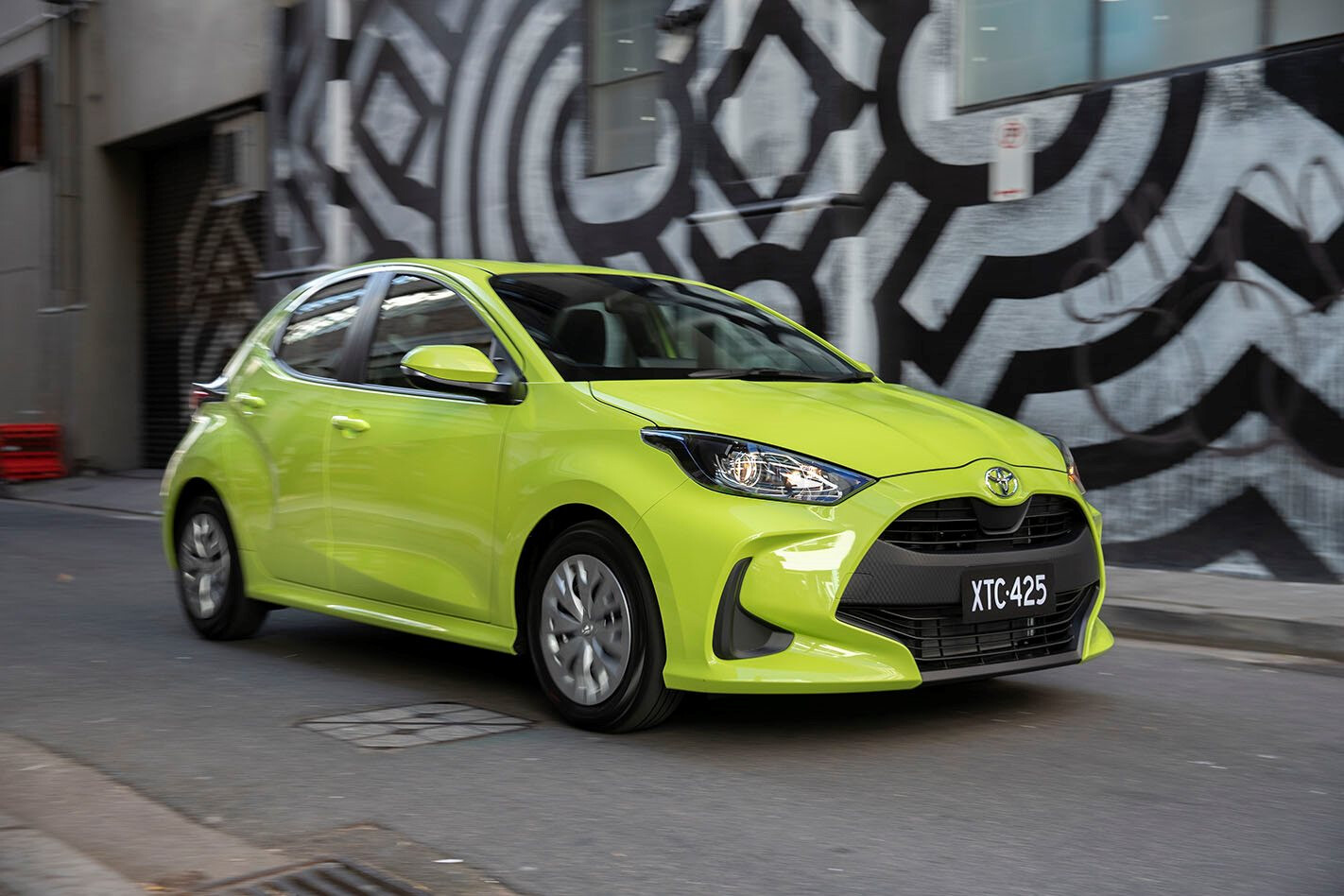
The GR Yaris hot hatch (below), which is not included in this review, arrived a couple of weeks after the standard versions.

Score breakdown
Things we like
- Deserved reputation for reliability
- Active safety, space and comfort
Not so much
- Relatively high entry-level price, lack of rear-seat amenities



